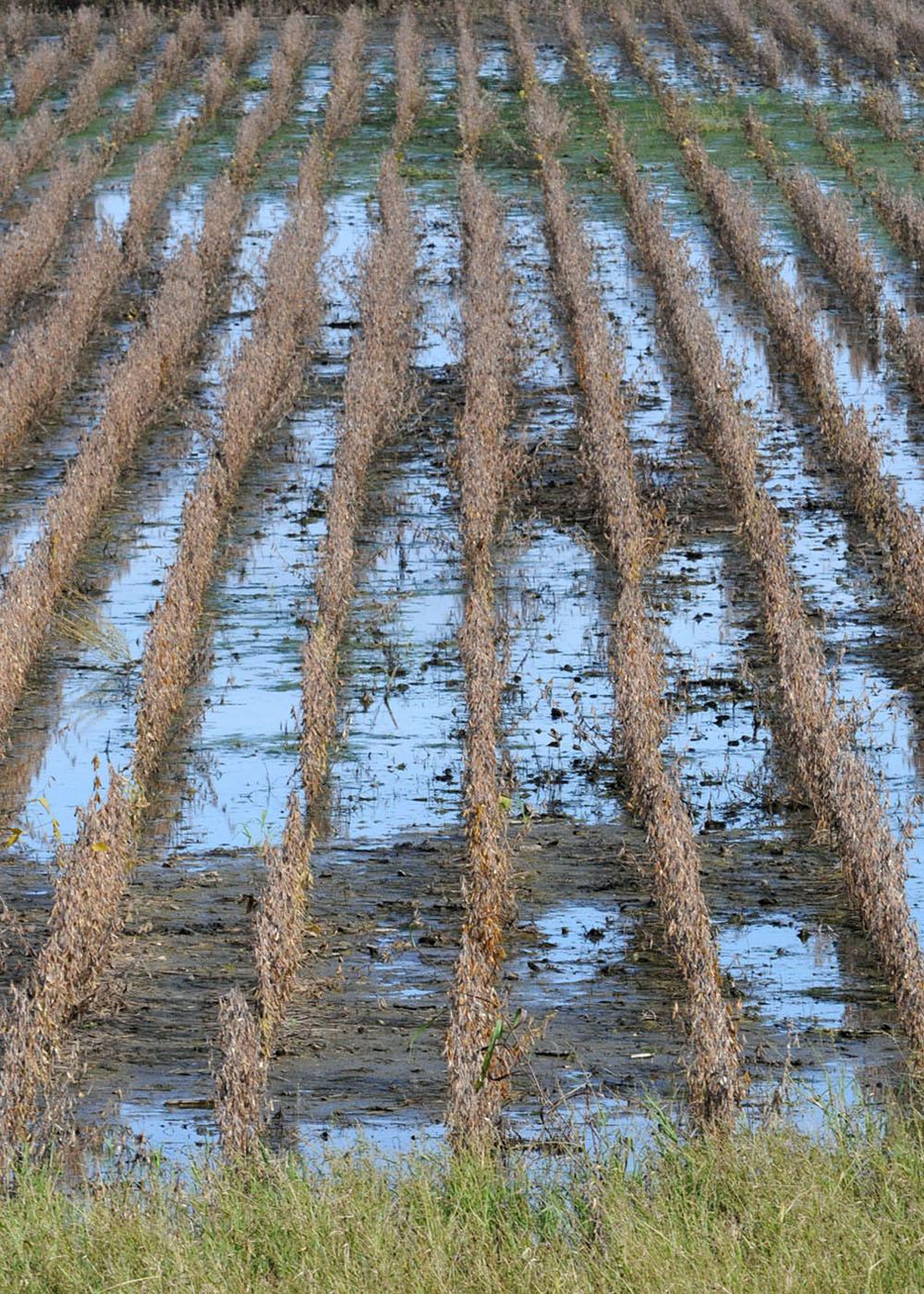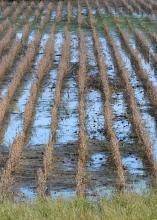Information Possibly Outdated
The information presented on this page was originally released on October 22, 2009. It may not be outdated, but please search our site for more current information. If you plan to quote or reference this information in a publication, please check with the Extension specialist or author before proceeding.
Excessive fall rains leave the state soggy
MISSISSIPPI STATE – A very wet September and October left most of the state’s soil saturated, as many places have had gotten rain in almost statistically impossible quantities.
Charles Wax, state climatologist and professor of geosciences at Mississippi State University, said February and May were unusually wet across much of the state, and the summer had few periods of dry weather. This caused many areas to have above-normal yearly rainfall totals when fall arrived. Then starting in September, rainfall began accumulating rapidly.
MSU had nearly 75 inches of rain from Jan. 1 to Oct. 20, 31 inches more than normal for this time. Jackson was 2 inches above normal with 47 inches for the year, while at 50 inches of rain, Stoneville was 9 inches above normal. Biloxi was right on track with 52.3 inches of rain.
“The big interest, though, is in the September to October period,” Wax said. “MSU received 19.44 inches of rain. The average is 6.15 inches, so that’s 13.29 inches above normal for that period. There’s a 99 percent chance of getting less than 15.9 inches during this time period, so you see how high that amount is compared to the past.”
During these same seven weeks, Jackson received 11.71 inches of rain -- 4.79 inches above normal; Stoneville received 15.64 inches of rain – 9.41 inches above normal; and Biloxi received 11.46 inches of rain – 2.67 inches above normal.
“All of the state has seen above normal rainfall during this period. Lots of places got more rain than they had a near or above 99 percent chance of getting less than,” Wax said.
Wax said current soil moisture ratings have 91 percent of the state’s soil at surplus moisture, 8 percent adequate and 1 percent is short.
Wax said the September rains were associated with an upper level low pressure area that stalled for at least two weeks just west of the state. It constantly drew in moisture from the Gulf of Mexico and dumped it across the state.
“The rain just rotated counter-clockwise around that low for days on end, moving from east to west across Mississippi,” Wax said.
More recent weather was the result of stalled fronts along the Gulf Coast, indicative of an El Nino occurrence.
“On Oct. 16, the Climate Prediction Center released its long-range forecast for a moderate El Nino to influence our winter weather,” Wax said. “Typically, that means a wet winter for us.”
Larry Oldham, soil specialist with the MSU Extension Service, said producers are trying to balance salvaging crops left in the fields and avoiding cutting ruts and compacting soil in cropland.
“If we have to go into these saturated soils with heavy equipment, we run the risk of increasing soil compaction issues,” Oldham said. “That will require effort to address when it does dry adequately.”
Saturated soils have loose water filling all the spaces between soil particles. Soil that is filled with water to what is called “field capacity” has water adhered to all available soil particles. Soil at field capacity can support weight, while saturated soil cannot support people and can become compacted.
Compacted soil has a dense layer of soil several inches below the surface. A person can test dry land for soil compaction by slowly probing the soil with a rod. The rod reaches resistance around 8-10 inches deep in soils that are compacted.
“Plant growth is limited in compacted soil, as there is reduced water and nutrient uptake,” Oldham said. “Producers must address the compaction issue, but soil has to be dry before this can be done.
“Producers who have compacted or rutted soil from running harvest equipment over saturated soils will have to factor in the additional cost of smoothing the ruts and subsoiling the land,” he said.
Compacted soils also dry out differently than other areas, keeping producers out of the field even longer.
“What’s above the compacted area may dry out sooner, but soil dries slower below that compacted layer,” he said.
Oldham said how fast land dries out depends on the type of soil it contains. Sandy soil drains and dries faster than others, and clay soils dry the slowest. Soils with actively growing crops dry out quickly, as these crops pump water out of the soil as they grow. Oldham said corn at tassel stage uses about one-fourth inch of water a day in 90 degree heat, pumping 7,000 to 8,000 gallons of water a day out of an acre of land.
Information from the MSU Extension Service dealing with crop damage and losses, as well as the status of the state’s major row crops, is available online at MSUcares.com.






